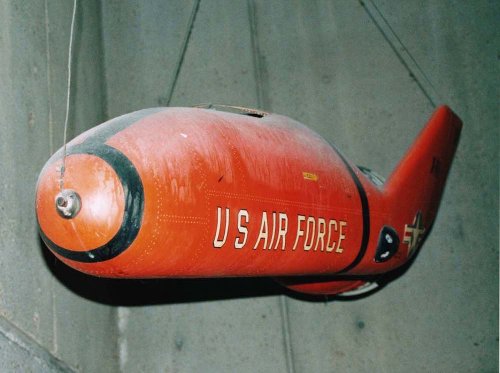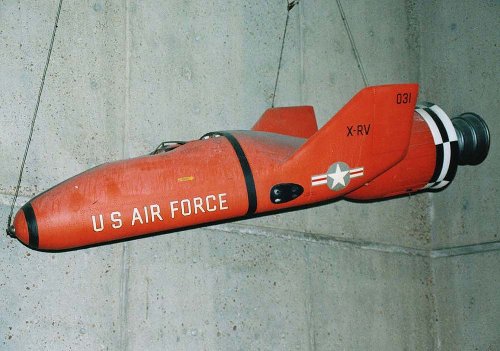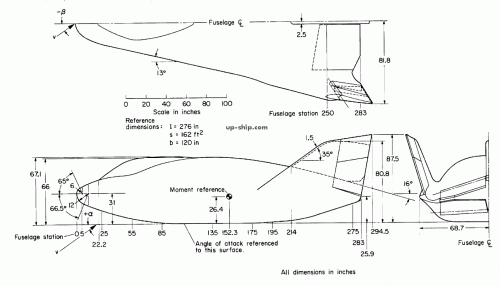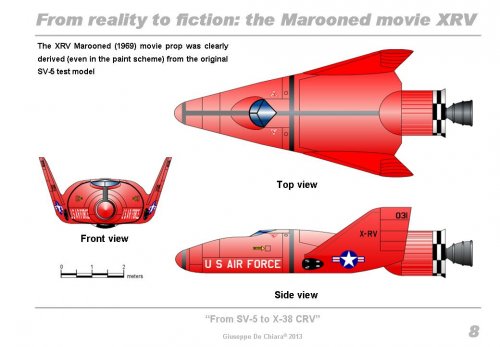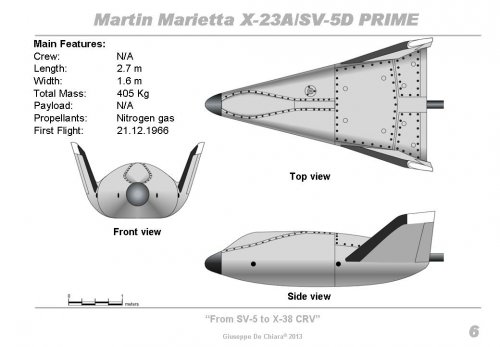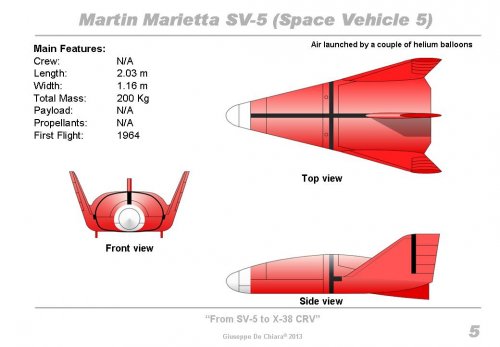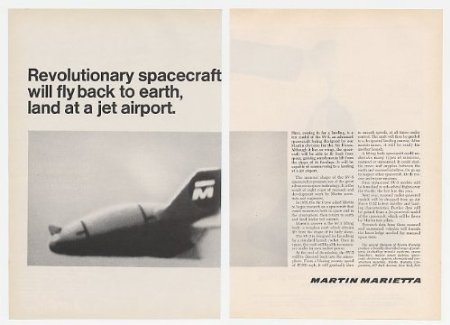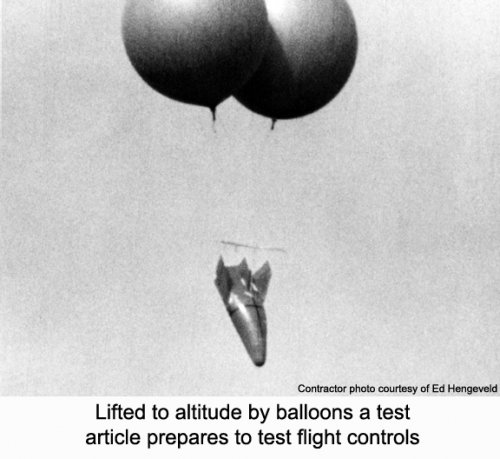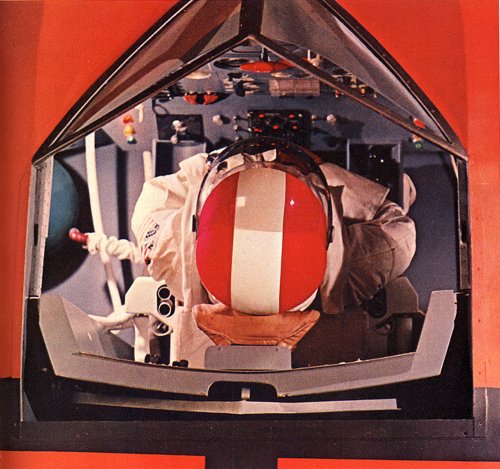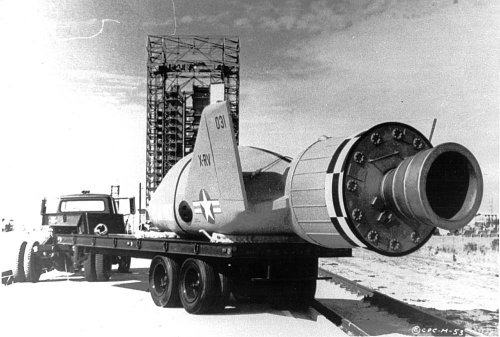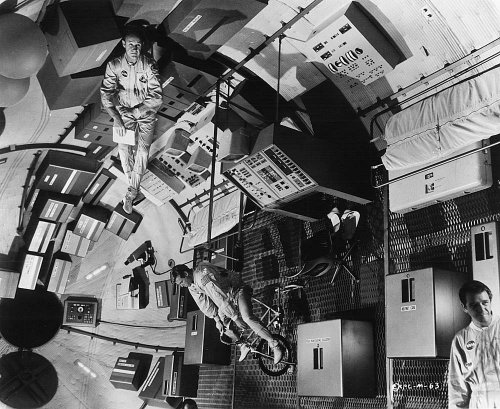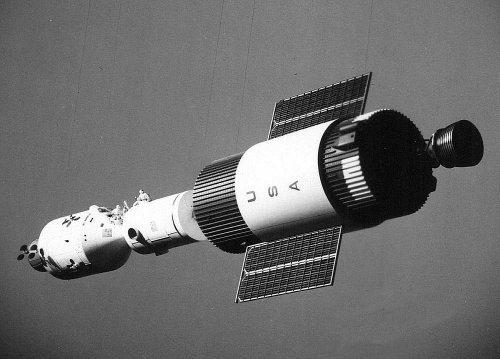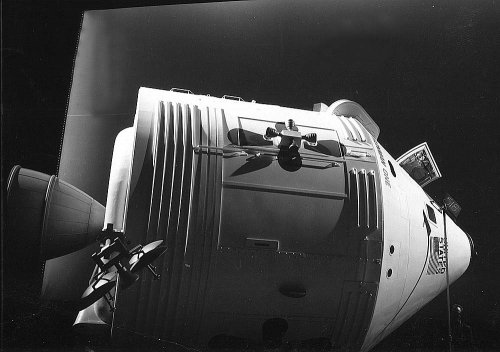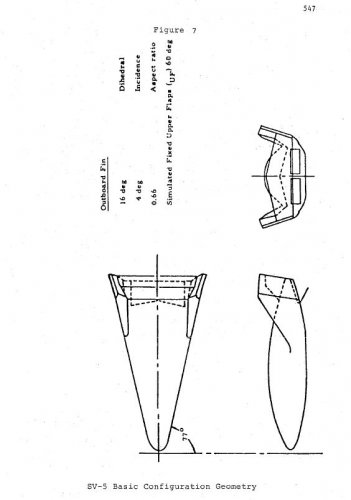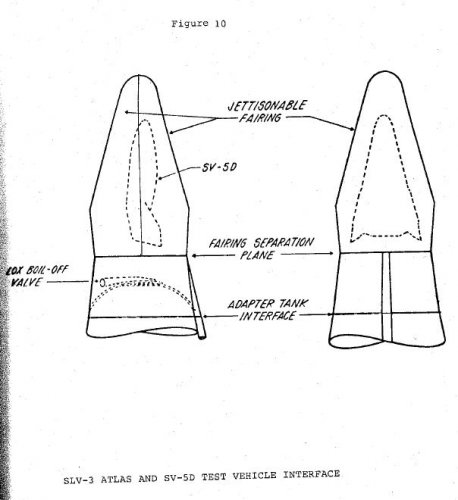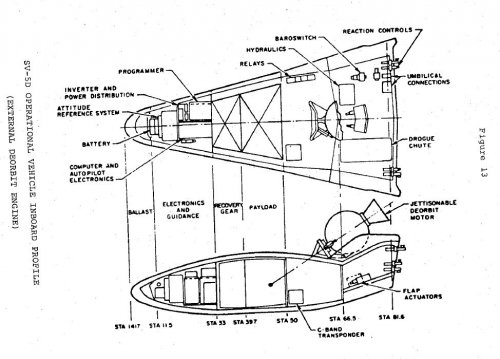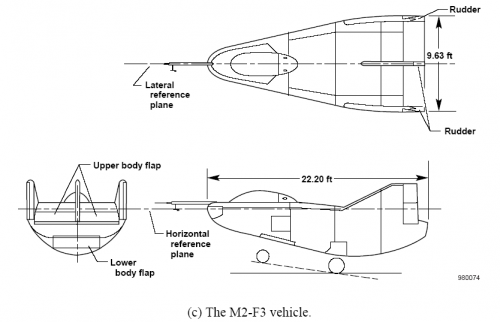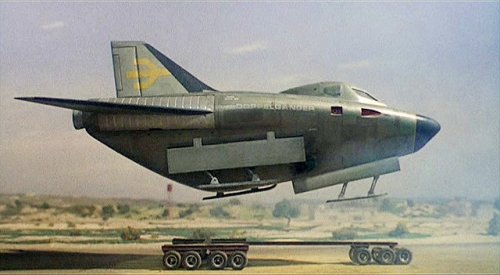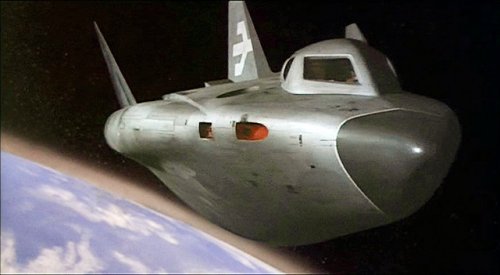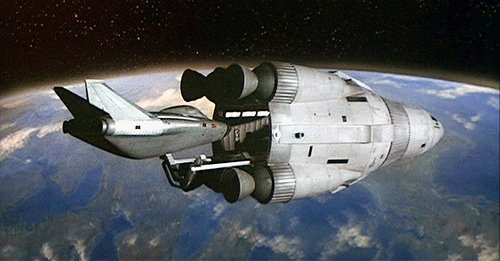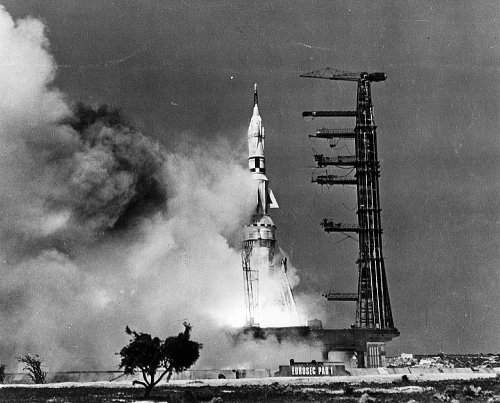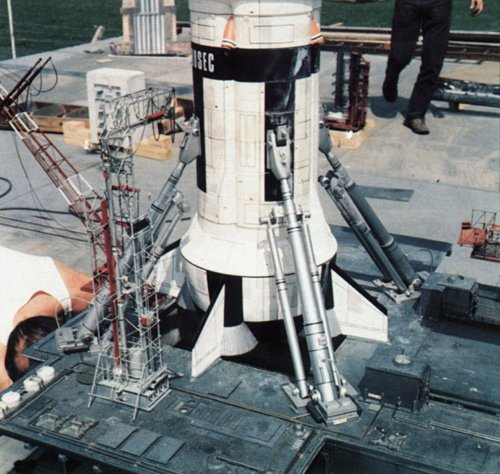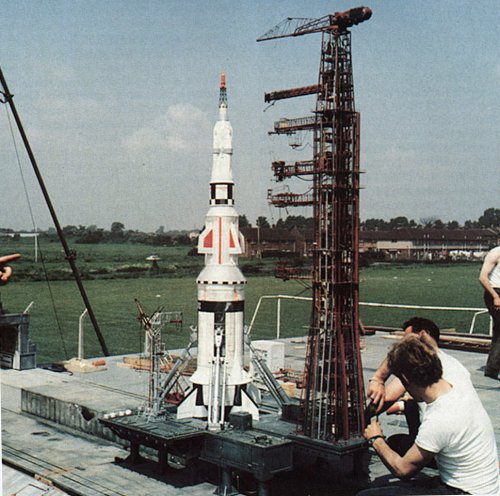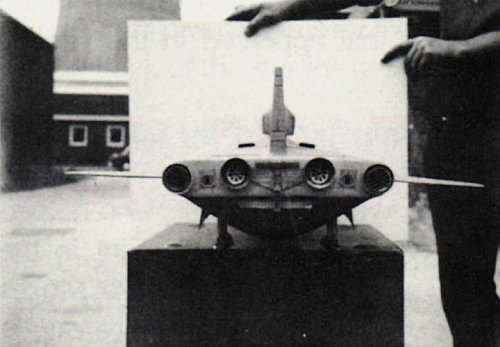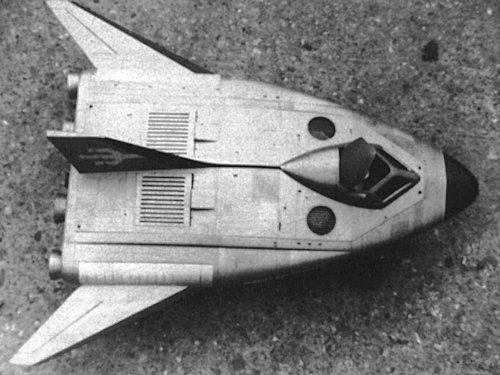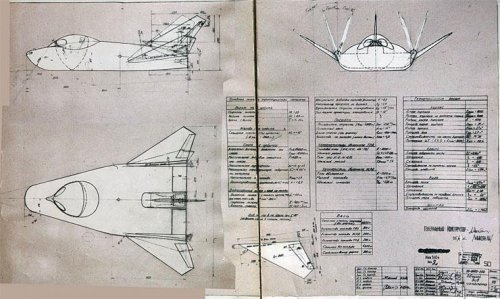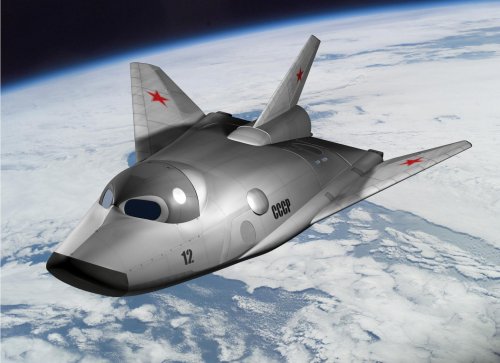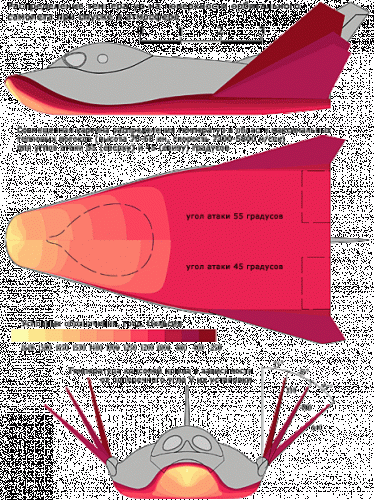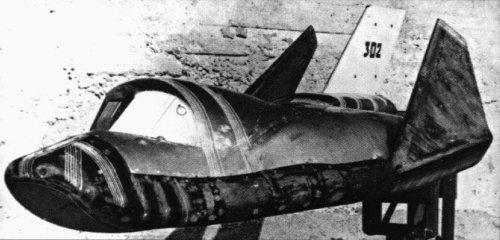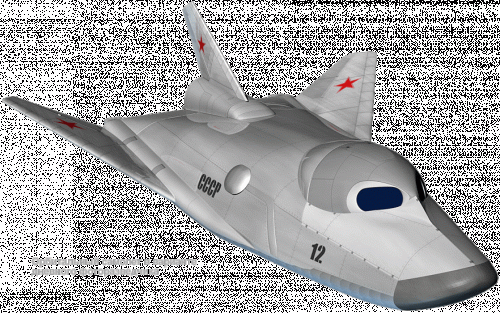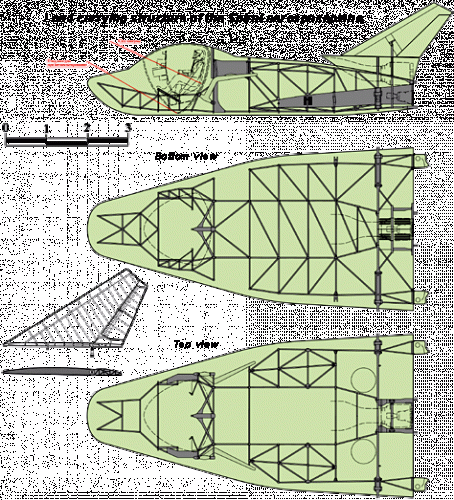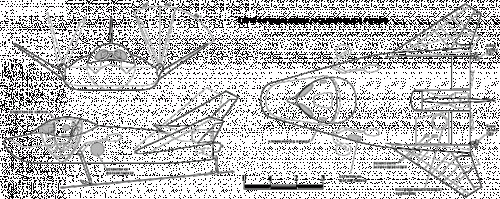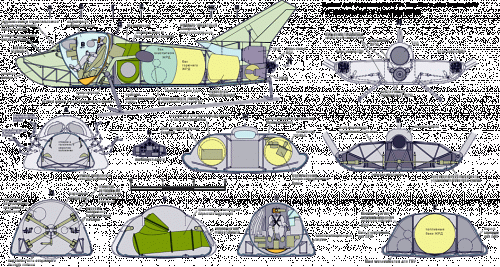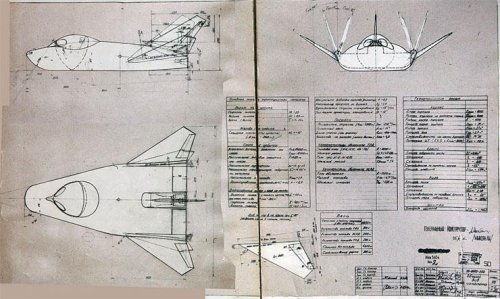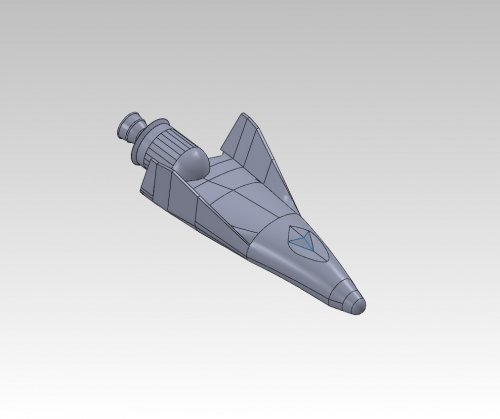You are using an out of date browser. It may not display this or other websites correctly.
You should upgrade or use an alternative browser.
You should upgrade or use an alternative browser.
XRV "Marooned Movie" versus X-24A
- Thread starter miraglia
- Start date
- Joined
- 25 June 2009
- Messages
- 14,109
- Reaction score
- 4,243
I'm afraid this has nothing to do in the Space Projects section, since it is merely a work of fiction...
I'm moving the topic to the appropriate section.
The word "totally" is a little extreme I think. Look for instance how flat the bottom of the X-RV's nose is, compared to the more rounded X-24. But of course there is definitely some influence there.
I'm moving the topic to the appropriate section.
miraglia said:I'm believing that the design of XRV is totally based on the X-24A.
The word "totally" is a little extreme I think. Look for instance how flat the bottom of the X-RV's nose is, compared to the more rounded X-24. But of course there is definitely some influence there.
- Joined
- 25 June 2009
- Messages
- 14,109
- Reaction score
- 4,243
blackstar said:I think you should move it back. Archipeppe, who sometimes posts here, has done some good work connecting the X-24 to the movie vehicle.
If the topic was centered around the X-24 and how it influenced works of fiction, then maybe it could have its place in the Space section...
But the way I see it, it is clearly a topic devoted to a work of fiction inspired by a real aircraft, so that's a different matter. The "X-RV" doesn't belong as such in the "Space" section because it clearly never was a space project at any stage in the real world.
Until someone shows me that a major manufacturer or design bureau was in charge of designing the thing, I'm not planning to move this topic back anytime soon... But of course, I'm willing to be proven wrong if you have any references on the subject.
archipeppe
ACCESS: Top Secret
- Joined
- 18 October 2007
- Messages
- 2,372
- Reaction score
- 2,765
blackstar said:I think you should move it back. Archipeppe, who sometimes posts here, has done some good work connecting the X-24 to the movie vehicle.
Here I'm.
For sure there is a strong connection between the SV-5 (the original shape which led to the X-23/24 family ) and the XRV movie prop.
I enclose some picture to explain well such connection.
Attachments
archipeppe
ACCESS: Top Secret
- Joined
- 18 October 2007
- Messages
- 2,372
- Reaction score
- 2,765
Stargazer2006 said:Beautiful works as usual, archipeppe! Thanks a lot for sharing.
I'm glad that you have appreciated it.
- Joined
- 25 June 2009
- Messages
- 14,109
- Reaction score
- 4,243
Back to the subject of where to file this topic... Do you think the "Marooned" crew might have had access to some of the SV-5 proposals at the time? And could a Martin or NASA person have been a consultant on the movie?
archipeppe
ACCESS: Top Secret
- Joined
- 18 October 2007
- Messages
- 2,372
- Reaction score
- 2,765
Stargazer2006 said:Back to the subject of where to file this topic... Do you think the "Marooned" crew might have had access to some of the SV-5 proposals at the time? And could a Martin or NASA person have been a consultant on the movie?
I try to answer at best of my knowledge.
1) Yes, I think that movie crew had some access to the SV-5 data since they was open to public, furthermore the SV-5 test mode was exploited for Martin-Marietta advertising!!
2) I don't know you should see the ending credit of the movie to check out if some NASA or Martin-Marietta representative was involved into the movie production. It is likely so since a lot of scenes was filmed at KSC or involving real NASA hardware and the whole movie was a sort of NASA-manifest (like the later Top Gun was for the NAVY).
Attachments
archipeppe
ACCESS: Top Secret
- Joined
- 18 October 2007
- Messages
- 2,372
- Reaction score
- 2,765
- Joined
- 13 August 2007
- Messages
- 7,815
- Reaction score
- 8,823
actually the makers of movie, got hell of support by NASA providers.
Advisor were Lockheed (there in end credit).
like Mission Operations Control Room sets were built by Philco-Ford Corporation, builders of the actual facilities in Johnson Space center !
the Plantronics headsets were same like NASA astronaut used.
the Ironman One CM is actual a Apollo block I Boilerplate test vehicle, rebuild to a Movie set ! (except feature a Square Hatch !)
also interior of movie CM was provide by NAA/Rockwell
So far i know the movie "Simulator" for Lifting body, is the actual Simulator it self !
oddly the XRV prop is display at the Marshall Spacefight Center museum in Huntsville AL.
http://www.cloudster.com/Sets&Vehicles/Marooned/MaroonedTop.htm
by the way
Marooned is only Movie who is referred NASA to correctly by the rules of grammar.
as the "National Aeronautics and Space Administration."
not like ANSA in "The Planet of the Apes"or USAA like in "2001 A Space Odyssey"
Advisor were Lockheed (there in end credit).
like Mission Operations Control Room sets were built by Philco-Ford Corporation, builders of the actual facilities in Johnson Space center !
the Plantronics headsets were same like NASA astronaut used.
the Ironman One CM is actual a Apollo block I Boilerplate test vehicle, rebuild to a Movie set ! (except feature a Square Hatch !)
also interior of movie CM was provide by NAA/Rockwell
So far i know the movie "Simulator" for Lifting body, is the actual Simulator it self !
oddly the XRV prop is display at the Marshall Spacefight Center museum in Huntsville AL.
http://www.cloudster.com/Sets&Vehicles/Marooned/MaroonedTop.htm
by the way
Marooned is only Movie who is referred NASA to correctly by the rules of grammar.
as the "National Aeronautics and Space Administration."
not like ANSA in "The Planet of the Apes"or USAA like in "2001 A Space Odyssey"
archipeppe
ACCESS: Top Secret
- Joined
- 18 October 2007
- Messages
- 2,372
- Reaction score
- 2,765
Michel Van said:actually the makers of movie, got hell of support by NASA providers.
Advisor were Lockheed (there in end credit).
like Mission Operations Control Room sets were built by Philco-Ford Corporation, builders of the actual facilities in Johnson Space center !
the Plantronics headsets were same like NASA astronaut used.
the Ironman One CM is actual a Apollo block I Boilerplate test vehicle, rebuild to a Movie set ! (except feature a Square Hatch !)
also interior of movie CM was provide by NAA/Rockwell
So far i know the movie "Simulator" for Lifting body, is the actual Simulator it self !
oddly the XRV prop is display at the Marshall Spacefight Center museum in Huntsville AL.
http://www.cloudster.com/Sets&Vehicles/Marooned/MaroonedTop.htm
by the way
Marooned is only Movie who is referred NASA to correctly by the rules of grammar.
as the "National Aeronautics and Space Administration."
not like ANSA in "The Planet of the Apes"or USAA like in "2001 A Space Odyssey"
Thanks for the hints Michel!!
BTW there were the following space vehicles depicted into the movie:
1) The Ironman One was clearly a modified Block 1 Apollo capsule with a shortened SM (probably taken by some proposal made into 60's for space station ferry).
2) The Spacelab was the typical "Wet Workshop" configuration of the early Skylab (even the interiors)
3) The XRV was a lifting body derived from the actual SV-5 with a sort of de-orbit stage (not a real service module rather than a sort of kicker liquid propellants engine since the ACS and all others S/S were onboard the XRV)
4) The Russian spacecraft was clearly derived by some Vostok mockup exposed during late 60's.
- Joined
- 13 August 2007
- Messages
- 7,815
- Reaction score
- 8,823
Picture :
Ironmen one CSM.
Wet Skylab exterior.
Internal view.
XRV arrive at launch pad
Astronaut Ted Dougherty inside XRV (were to hell are place for Buzz Lloyd, Clayton Stone and Jim Pruett ?)
Ironmen one CSM.
Wet Skylab exterior.
Internal view.
XRV arrive at launch pad
Astronaut Ted Dougherty inside XRV (were to hell are place for Buzz Lloyd, Clayton Stone and Jim Pruett ?)
Attachments
archipeppe
ACCESS: Top Secret
- Joined
- 18 October 2007
- Messages
- 2,372
- Reaction score
- 2,765
Michel Van said:Astronaut Ted Dougherty inside XRV (were to hell are place for Buzz Lloyd, Clayton Stone and Jim Pruett ?)
Good question, I've always wonder about it.
It is easy to see, from the drawing, that the XRV (eXperimental Re-entry Vehicle? eXperimental Rescue Vehcile? What else?) was taylored for only one astronaut, exactly like all the other real life lifting bodies (HL-10; M2-F1/F2/F3; X-24A/B/C).
Simply there wasn't enough room for other 3 people (not considering their massive spacesuits).
The XRV indeed remains one of the most veritable and fascinating space vehicle movie prop ever (not counting all those seen in 2001).
- Joined
- 9 October 2009
- Messages
- 21,129
- Reaction score
- 12,216
Slightly OT:
http://www.youtube.com/watch?v=3D5Klmq_Swc&feature=player_detailpage
http://www.youtube.com/watch?v=3D5Klmq_Swc&feature=player_detailpage
- Joined
- 13 August 2007
- Messages
- 7,815
- Reaction score
- 8,823
so Technical Advisors were Martin Caidin and George Smith
Caidin is clear: the author of original "Marooned" and "Cyborg" book aka "the Six billion Dollar Man"
but who is George Smith ?
Caidin is clear: the author of original "Marooned" and "Cyborg" book aka "the Six billion Dollar Man"
but who is George Smith ?
I'm sure I read somewhere that the full size Service Module was built "short" and only supposed to be shot slightly head-on and take advantage of forced perspective. All the miniature models were correct length.
Regards,
Barry
Regards,
Barry
archipeppe
ACCESS: Top Secret
- Joined
- 18 October 2007
- Messages
- 2,372
- Reaction score
- 2,765
Barrington Bond said:I'm sure I read somewhere that the full size Service Module was built "short" and only supposed to be shot slightly head-on and take advantage of forced perspective. All the miniature models were correct length.
Regards,
Barry
Probably, indeed NASA and NAA really studied some short-SM version of the Apollo capsule for large space station resupply missions and it have some sense since no larger amount of fuel was needed for LEO mission rahter than the lunar ones.
It necessary to remember that the Apollo hardware used for Skylab missions was a surplus of the original Apollo Programme masterplan.
archipeppe
ACCESS: Top Secret
- Joined
- 18 October 2007
- Messages
- 2,372
- Reaction score
- 2,765
Michel Van said:so Technical Advisors were Martin Caidin and George Smith
Caidin is clear: the author of original "Marooned" and "Cyborg" book aka "the Six billion Dollar Man"
but who is George Smith ?
George Smith?? Who know...
BTW The original Caidin's "Marooned" novel was far away realistic than the screenplay derived to it.
The novel foresaw a single Mercury astronaut stranded in orbit (more or less like the Iroman One crew) saved by another astronaut launched (alone) in a Gemini spacecraft prototype rather than a lifting body.
This play was consistent to the time when it was written since in the early 60's the Mercury programme was still ongoing and Gemini was under test, so it was logical and made sense.
Also Russians were involved with a Voskhod capsule more or less like depicted into the movie.
There are some things into the movie that I really dislike:
1) The too much pessimistic tone of the overall screenplay
2) The awful music theme
3) The lack of Capcom figure that made not so much realistic all the communications between crew and control center (actually I work in a real control room)
4) The XRV off-scale, it could be designed more consistent to the capability of carry 1+4 crew even if cramped inside
5) The usage of a Vostok rather than a Soyuz (at that times more or less known even in graphical form)
6) The unrealistic space helmet used by the Iroman and XRV crew
miraglia
ACCESS: Restricted
archipeppe
ACCESS: Top Secret
- Joined
- 18 October 2007
- Messages
- 2,372
- Reaction score
- 2,765
miraglia said:PRIME was the basis of the XRV in Marooned (It is a possibility)
Yes it was.
http://www.secretprojects.co.uk/forum/index.php/topic,18537.msg178286.html#msg178286
- Joined
- 13 August 2007
- Messages
- 7,815
- Reaction score
- 8,823
archipeppe said:There are some things into the movie that I really dislike:
1) The too much pessimistic tone of the overall screenplay
2) The awful music theme
3) The lack of Capcom figure that made not so much realistic all the communications between crew and control center (actually I work in a real control room)
4) The XRV off-scale, it could be designed more consistent to the capability of carry 1+4 crew even if cramped inside
5) The usage of a Vostok rather than a Soyuz (at that times more or less known even in graphical form)
6) The unrealistic space helmet used by the Iroman and XRV crew
on 1&3 the screenplay look more like first AIRPORT movie as to orginal Novel.
also they cut "incidental" sounds, the headsets picked up the actors' breathing and other sounds. (for not to confuse the audience)
but that was way Hollywood portray Disaster-movies like this until "Apollo 13" show "the right stuff"
2. there is almost no music in movie and what we hear, is glue together from sounds of space flight like satellite transmission.
4. you notice that XRV is inside a Payload faring of Titan IIIC, to save money on special effect.
and Marooned "marooned" taking only $4 million of it $8 million production cost in 1969.
6. the problem with Helmet was, you have to see the actor clearly. what was hell of problem in "The Right Stuff" with mercury suits.
see this video for more understanding
Last edited:
OM
ACCESS: Top Secret
...Several points:
1) George Smith was a sci-fi writer who was friends with Martin Caidin. He also played the Cape WXO in the film as a cameo, as did Caidin, playing the reporter who describes the XRV's arrival at the Cape. Smith died in 1996, IIRC. His short Wikibio can be found here:
http://en.wikipedia.org/wiki/George_H._Smith_(fiction_author)
2) The SM in the film was in fact built "short", but only to save bucks through the used of forced perspective. Here's an image of how the whole CSM short stack looked from the angle it was *not* supposed to be filmed from:

3) The "Music" style was deliberate. There was a trend going on around 1970 where sci-fi film orchestrators would write scores using unique and totally oddball elements in place of real instruments when they could. Planet of the Apes' percussion section consisted mostly of steel cooking pots, and the horns section were horns shaped from various animal horns. Andromeda Strain used a lot of reverb tricks, with the reverbs being backmasked, and some of the same faux telemetry noises mixed in that were discards from the Marooned soundtrack mixing sessions.
...Much of the reasoning behind the particular methodology used in creating the score was a desire to create a score that would not distract from the tension on the screen, and would only add to the "cosmic wonder" of certain scenes, such as views of the various spacecraft from outside. Like Sandy Courage's "Swwwwoooooooshhhh!" on the Original Star Trek, the "ship" music served that purpose as much as the sound of the RCS quads - neither of which should have been heard in a vacuum.
Ergo, it was by design, not accident, that the scores for those films - Marooned in particular - turned out as odd as they did.
4) The payload fairing trick was also used on Countdown, a film that's sorely needed those 18 minutes that were cut before the premier readded, and a whole bunch of special effects shots added so we can see the parts Robert Altman was too cheap to have done - i.e., the shroud sep from Pilgrim, shots of the Pilgrim/Double Centaur insertion & crasher stages, Pilgrim actually landing, etc. There's been some big talk from some of the CGI freaks on YouTube about editing together such a fan edit, but nothing so far in the past six years. Go figger.
5) *ALL* Disaster films following Airplot (sic) were like that. Audiences ate it up like popcorn until Irwin Allen burned that genre out until the studios teamed up with the anti-nuke freaks and we got the likes of Meteor, The Day After, Threads, Letters from a Dead Man, and in highly honorable mention, Testament in the 80's.
6)The $4MUSD take was for the first-run, which was erroneously distributed as a "road show". The re-release in '72 - mostly aimed at drive-ins and big screen theaters - recouped the losses in the first week, and the film made about $12MUSD in the total box office. It got a major boost from rentals when Joel and the Bots got ahold of a syndicated edited version called Space Travellers and riffed it a new airlock. Took it a while, but the film did make a profit.
7) The one real complaint I've heard from those in the Astronaut Corps is that no matter how bad the situation had become, we'd have never seen one of the crew go berzerk like Buzz Lloyd did. Same argument applies to Jack Swigert's little temper-tantrum on Apollo 13 - it wouldn't happen because everyone is trained to know that no matter how hard you bounce off the walls, you'll still be right where you are. And besides, you'll be using more O2 for nothing.
8) Caiden was asked repeatedly over the years as to why a Vostok - now a decade retired - was used when a Soyuz would have been in full operation by the time the events in the film happened. In fact, the Soyuz would have been able to bring back one of the Ironman crew under emergency conditions, So why wasn't that used?
Answer: "Simple dramatic license". :
...For those interested, this answers.com page has some interesting factoids about the film and its production:
http://www.answers.com/topic/marooned
1) George Smith was a sci-fi writer who was friends with Martin Caidin. He also played the Cape WXO in the film as a cameo, as did Caidin, playing the reporter who describes the XRV's arrival at the Cape. Smith died in 1996, IIRC. His short Wikibio can be found here:
http://en.wikipedia.org/wiki/George_H._Smith_(fiction_author)
2) The SM in the film was in fact built "short", but only to save bucks through the used of forced perspective. Here's an image of how the whole CSM short stack looked from the angle it was *not* supposed to be filmed from:

3) The "Music" style was deliberate. There was a trend going on around 1970 where sci-fi film orchestrators would write scores using unique and totally oddball elements in place of real instruments when they could. Planet of the Apes' percussion section consisted mostly of steel cooking pots, and the horns section were horns shaped from various animal horns. Andromeda Strain used a lot of reverb tricks, with the reverbs being backmasked, and some of the same faux telemetry noises mixed in that were discards from the Marooned soundtrack mixing sessions.
...Much of the reasoning behind the particular methodology used in creating the score was a desire to create a score that would not distract from the tension on the screen, and would only add to the "cosmic wonder" of certain scenes, such as views of the various spacecraft from outside. Like Sandy Courage's "Swwwwoooooooshhhh!" on the Original Star Trek, the "ship" music served that purpose as much as the sound of the RCS quads - neither of which should have been heard in a vacuum.
Ergo, it was by design, not accident, that the scores for those films - Marooned in particular - turned out as odd as they did.
4) The payload fairing trick was also used on Countdown, a film that's sorely needed those 18 minutes that were cut before the premier readded, and a whole bunch of special effects shots added so we can see the parts Robert Altman was too cheap to have done - i.e., the shroud sep from Pilgrim, shots of the Pilgrim/Double Centaur insertion & crasher stages, Pilgrim actually landing, etc. There's been some big talk from some of the CGI freaks on YouTube about editing together such a fan edit, but nothing so far in the past six years. Go figger.
5) *ALL* Disaster films following Airplot (sic) were like that. Audiences ate it up like popcorn until Irwin Allen burned that genre out until the studios teamed up with the anti-nuke freaks and we got the likes of Meteor, The Day After, Threads, Letters from a Dead Man, and in highly honorable mention, Testament in the 80's.
6)The $4MUSD take was for the first-run, which was erroneously distributed as a "road show". The re-release in '72 - mostly aimed at drive-ins and big screen theaters - recouped the losses in the first week, and the film made about $12MUSD in the total box office. It got a major boost from rentals when Joel and the Bots got ahold of a syndicated edited version called Space Travellers and riffed it a new airlock. Took it a while, but the film did make a profit.
7) The one real complaint I've heard from those in the Astronaut Corps is that no matter how bad the situation had become, we'd have never seen one of the crew go berzerk like Buzz Lloyd did. Same argument applies to Jack Swigert's little temper-tantrum on Apollo 13 - it wouldn't happen because everyone is trained to know that no matter how hard you bounce off the walls, you'll still be right where you are. And besides, you'll be using more O2 for nothing.
8) Caiden was asked repeatedly over the years as to why a Vostok - now a decade retired - was used when a Soyuz would have been in full operation by the time the events in the film happened. In fact, the Soyuz would have been able to bring back one of the Ironman crew under emergency conditions, So why wasn't that used?
Answer: "Simple dramatic license". :
...For those interested, this answers.com page has some interesting factoids about the film and its production:
http://www.answers.com/topic/marooned
archipeppe
ACCESS: Top Secret
- Joined
- 18 October 2007
- Messages
- 2,372
- Reaction score
- 2,765
Many thanks OM for all those info about the movie.
aliensporebomb
If it flies, it's probably interesting...
I remember that movie scaring the willies out of me when I was a little kid but when I saw it years later as an adult the slow pacing and glacial action made me go "why was I so freaked out about this?" I still thought the lifting body was really neat and wished we'd had something like that in inventory. I figured it was based on some real thing but it sure looked good in the film.
archipeppe
ACCESS: Top Secret
- Joined
- 18 October 2007
- Messages
- 2,372
- Reaction score
- 2,765
aliensporebomb said:I remember that movie scaring the willies out of me when I was a little kid but when I saw it years later as an adult the slow pacing and glacial action made me go "why was I so freaked out about this?" I still thought the lifting body was really neat and wished we'd had something like that in inventory. I figured it was based on some real thing but it sure looked good in the film.
You're not alone: Space 1999 (season one I mean) had the same effect on me.
miraglia
ACCESS: Restricted
In the movie "Journey to the far side of the Sun" is another example of use of a "lifting body", this time derived from M2-F3.
Attachments
miraglia
ACCESS: Restricted
archipeppe
ACCESS: Top Secret
- Joined
- 18 October 2007
- Messages
- 2,372
- Reaction score
- 2,765
miraglia said:In the movie "Journey to the far side of the Sun" is another example of use of a "lifting body", this time derived from M2-F3.
It is another credible movie prop (Anderson's models were always credible), in this case it is somewhat in the middle between an X-15 and an M2-F3, but it shows an unique feature: the two wings rotating along the x-axis, retracted to minimize volume at launch and drag during re-entry and extracted to maximize lift during the landing phase.
This feature make the "Dove" model more similiar to the Russian Spiral OS concept (at that times still secret). An incredible shot that a Sci-fi movie prop got such advanced feature like a real life spacecraft.
Attachments
miraglia
ACCESS: Restricted
archipeppe
ACCESS: Top Secret
- Joined
- 18 October 2007
- Messages
- 2,372
- Reaction score
- 2,765
miraglia said:Yes "Spiral"
It is incredible how much Dove resembles the Spiral....
Anyway since the Anderson movie was a flop a lot of movie props were turned out to the new live action series "UFO" and it was really a success.
- Joined
- 13 August 2007
- Messages
- 7,815
- Reaction score
- 8,823
archipeppe said:miraglia said:Yes "Spiral"
It is incredible how much Dove resembles the Spiral....
Anyway since the Anderson movie was a flop a lot of movie props were turned out to the new live action series "UFO" and it was really a success.
i notice that already on June 20, 2009 in Spiral 50/50 TSTO discussion ;D
http://www.secretprojects.co.uk/forum/index.php/topic,2250.msg60370.html#msg60370
archipeppe
ACCESS: Top Secret
- Joined
- 18 October 2007
- Messages
- 2,372
- Reaction score
- 2,765
Michel Van said:archipeppe said:miraglia said:Yes "Spiral"
It is incredible how much Dove resembles the Spiral....
Anyway since the Anderson movie was a flop a lot of movie props were turned out to the new live action series "UFO" and it was really a success.
i notice that already on June 20, 2009 in Spiral 50/50 TSTO discussion ;D
http://www.secretprojects.co.uk/forum/index.php/topic,2250.msg60370.html#msg60370
You're right Michel, I forgot it.
Time is running and I'm getting old..... :
miraglia
ACCESS: Restricted
archipeppe
ACCESS: Top Secret
- Joined
- 18 October 2007
- Messages
- 2,372
- Reaction score
- 2,765
miraglia said:My Solidworks model XRV + Retro Rocket Motor
I put in www.shapeways.com site for those who want the model in 3D printing.
Cute!
nice, what section in shapeways did you put it at, id be interested in printing one out for a looksee 
cheers, Joe
cheers, Joe
miraglia
ACCESS: Restricted
Search by XRV site of Shapeways OK
OM
ACCESS: Top Secret
archipeppe said:Many thanks OM for all those info about the movie.
...Нет проблем, мой друг! It's the least I can do for all the illustrations you've done over the years, some of those 3-Views I intend to translate into 3D Studio once I get the new Graphics Workstation up and running. Maybe next week if things go well
OM
ACCESS: Top Secret
Stargazer2006 said:Wow. Beautiful. Kinda NASA meets Thunderbirds. Thanks for bringing this one to our attention, miraglia!
Actually, Ed Bishop plays the NASA liaison to EUROSEC.
...Shame you haven't seen this one before. It's actually a pretty good film once you get enough Suspension of Disbelief going, and can ignore the fact that by the time the film takes place - be it 1980, 2061 or 2052, depending on when Gerry Anderson is telling the stories about making the film with Reg Hill and "that bitch who raped me in divorce court" - celestial mechanics would have long since given away the existence of *something* on the opposite side of the Sun in our orbit with similar if not identical mass. It's a plot hole big enough to drive a LC39 Crawler through fully loaded, but otherwise it holds up surprisingly well.
...One of the best fanfic excuses I've seen for why the "new planet" is never before discovered ties in with the "hibernation" sequence. Simply put, all those hypnotic visuals were some sort of "space warp" effect that occurs by going too close to the Sun, and instead of going to the "new planet", the ship and its contents have their molecular structure reversed, atom for atom, and then flung back around at the Earth. So there's no "two of everything", just one ship and its crew, contents and Dove mirrored.
Hey, if it worked for Star Trek... ;D ;D B)
...On a side note, what Doppelganger/Journey to the Far Side of the Sun never seems to get proper recognition for is the sound editing. Possibly the best example of just how much attention to sound detail occurs when the 2nd Dove crashes into the booster still in the retractable VAB and all hell breaks loose. In the midst of all the explosions, a large chunk of fuel piping flies out of the blasts, and clatters on the ground in front of the camera. The sound and stereo mix match the impact, and sound just like a large section of pipe would sound bouncing around as seen on the screen. This is what put the "Super" in "Supermarionation", even though the effects were deliberately not advertised as such.
...On another side note, what *does* hurt about this film is that I saw it for the first time at the drive-in in late, late 1970. Great intro credits with a thunderous, crashing orchestral theme by Barry Gray. However, what hurts is the realization that within the next 11 years I'd have worked with every single piece of computer equipment shown as background in the title sequence. And it was all considered either obsolete by then, or just about.
That, kids, was OM's first of his infamous "Geritol and Vodka" moments, and I was not even twenty years old then :'( :'( :'(
Similar threads
-
Secret Flight Test History - An Alternate History of the X-24C
- Started by Dynoman
- Replies: 26
-
-
Growing confusion between the sections in which people post
- Started by Stargazer
- Replies: 10
-
Fictional Warships in Movies & TV
- Started by uk 75
- Replies: 61
-

